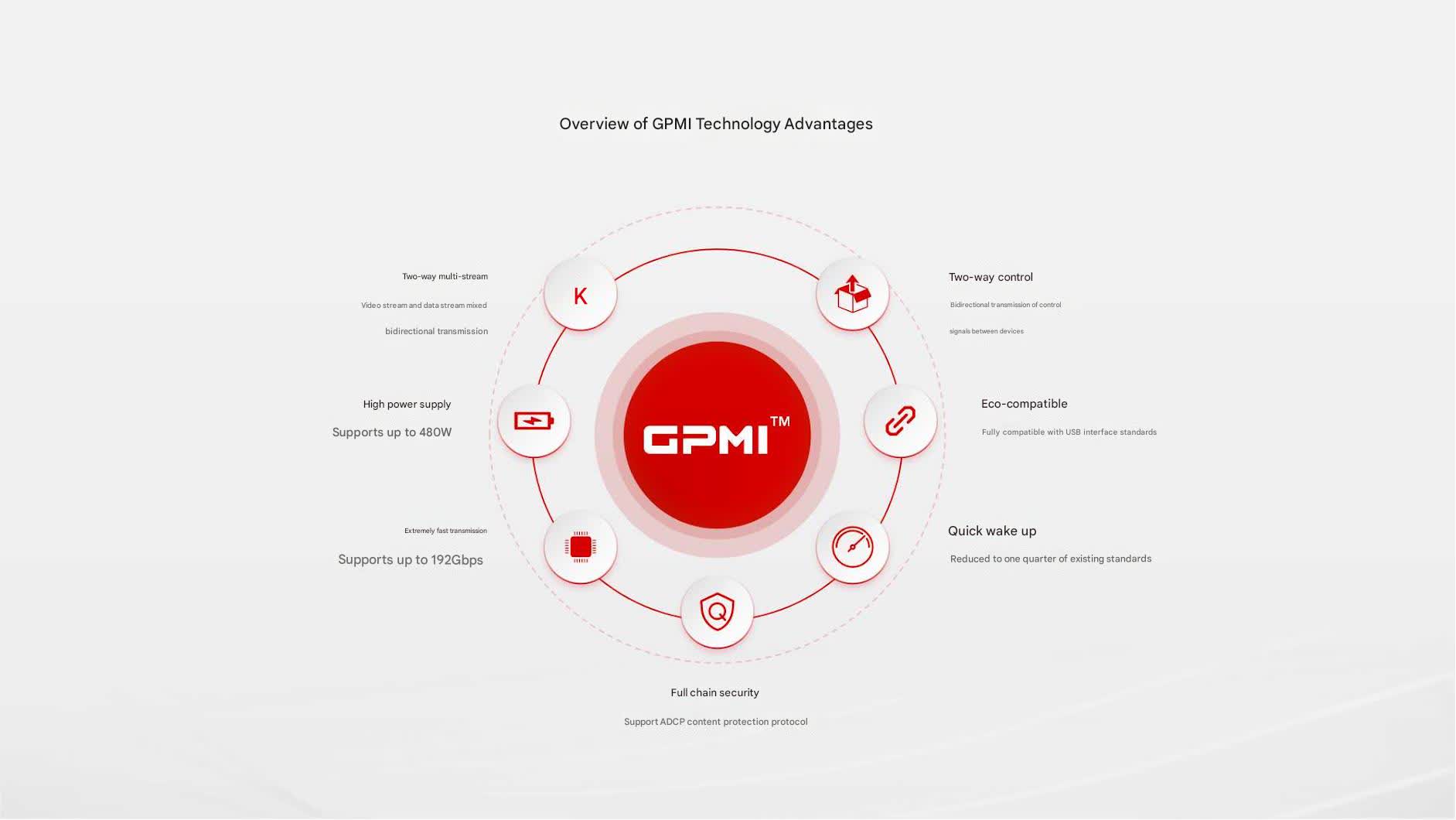Serving tech enthusiasts for over 25 years.
TechSpot means tech analysis and advice you can trust.
Something to look forward to: An alliance of Chinese companies has announced a new audio and video wired interface standard called the General Purpose Media Interface or GPMI. Not only does it boast up to 192 Gbps bandwidth – designed to support 8K – but GPMI also provides 480W power delivery.
The Shenzhen 8K UHD Video Industry Cooperation Alliance writes that GPMI comes with two connectors: Type C, which is compatible with existing USB Type-C ports, offering 96Gbps bandwidth and 240W of power transfer, and Type-B, which uses a proprietary connector and packs the full 192 Gbps/480W.
While GPMI with the Type C-connector has the same power delivery as USB4, the 96 Gbps bandwidth is more than double the 40 Gbps data limit of USB4 using Extended Power Range (EPR) under USB PD 3.1.
HDMI 2.1, meanwhile, reaches 48Gbps with no power delivery, while Thunderbolt 4 offers 40 Gbps and 100W power delivery.
| GPMI Type-B | 192 Gbps | 480W |
| GPMI Type-C | 96 Gbps | 240W |
| DisplayPort 2.1 UHBR20 | 80 Gbps | No Power |
| HDMI 2.1 FRL | 48 Gbps | No Power |
| Thunderbolt 4 | 40 Gbps | 100W |
| USB4 | 40 Gbps | 240W |
| HDMI 2.1 TMDS | 18 Gbps | No Power |
GPMI Type B promises high-bandwidth video, networking, and power delivery through a single cable, reducing the number of required cables. The standard has some major implications for the likes of laptops with external GPUs.
GPMI is said to come with seven main advantages over current interface technologies: bidirectional multi-stream, bidirectional control, high-power power supply, ecological compatibility, ultra-fast transmission, fast wake-up, and full-chain security.
GPMI can also be daisy chained and supports HDMI-CEC, allowing users to control multiple devices connected via GPMI with a single remote.
The Type-C version of GPMI has already been licensed for use under the USB-IF (USB Implementers Forum).
More than 50 Chinese companies are working on the development and standardization of GPMI, including TCL, HiSilicon, Hisense, and Huawei.
It's unclear when the new standard will start making its way into consumer products and how much it will be adopted outside of China. We don't know anything about the maximum cable lengths right now, either.
The aim is for GPMI to be released in phases, first for home entertainment devices, then automotive and transport, followed by industrial applications.












 English (US) ·
English (US) ·